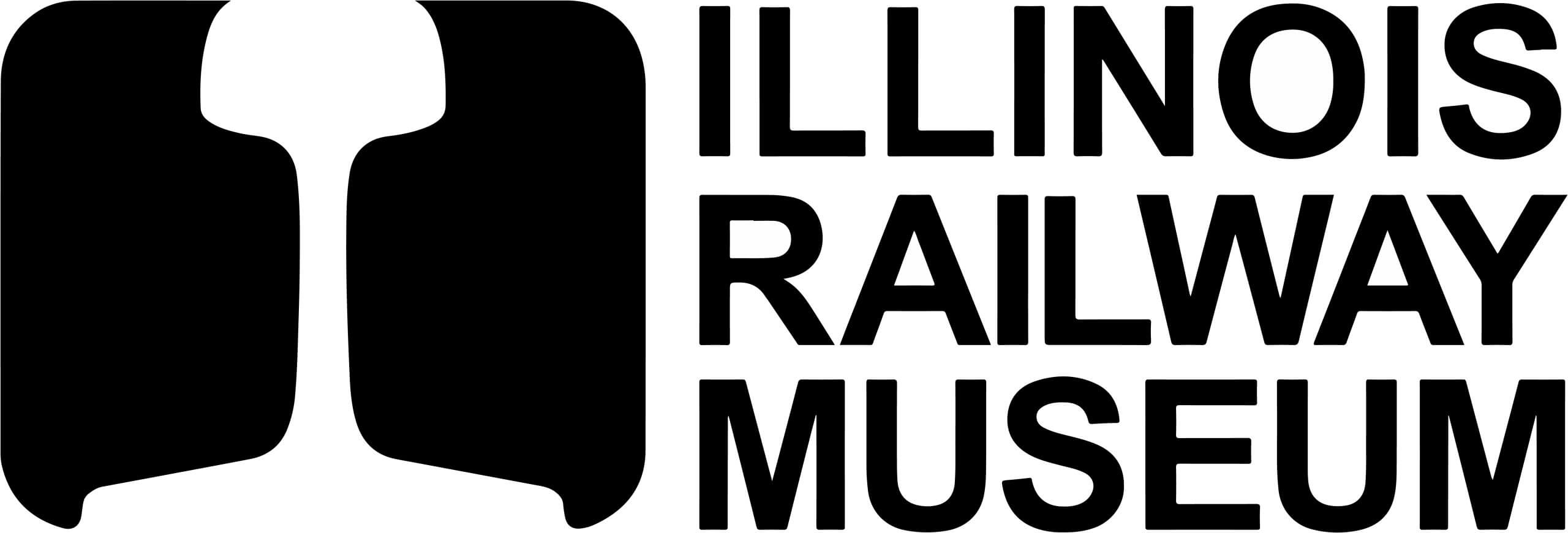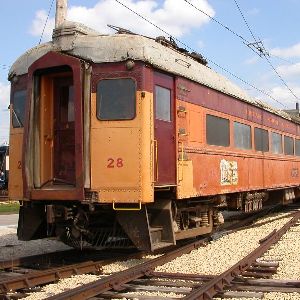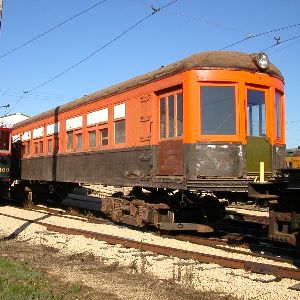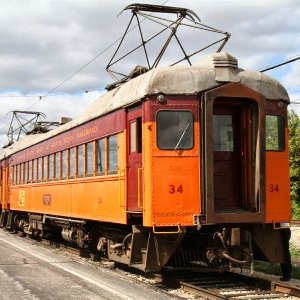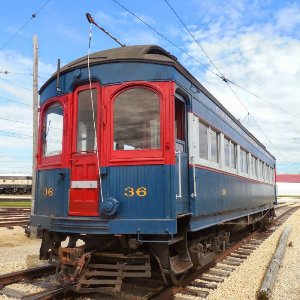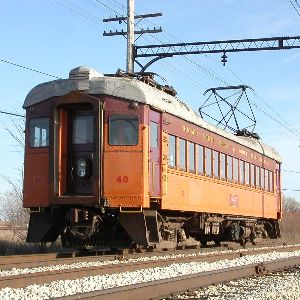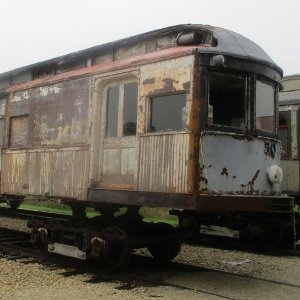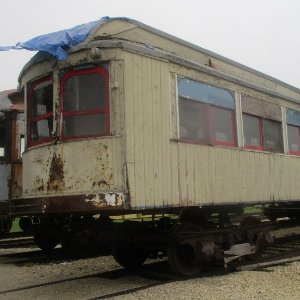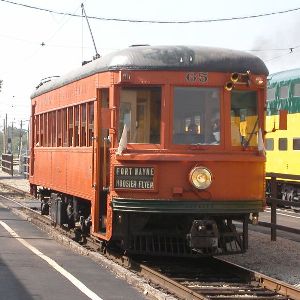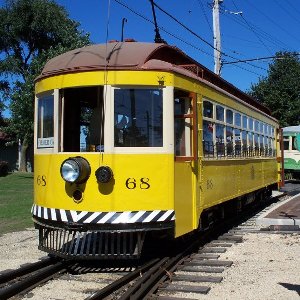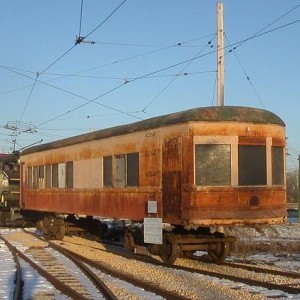Search Results for: interurban+car+
Chicago South Shore & South Bend 28
South Shore Line 28 is a heavyweight steel coach built for interurban service between Chicago and South Bend. In the 1940s the car was modernized; it cut in half and an 18′ section was inserted into the middle of the body to lengthen the car while at the same time
Michigan Electric 28
Michigan Electric 28 is an all-steel combination passenger-baggage car built for use on the interurban network in southern Michigan. It is an early example of all-steel passenger car construction and was built to operate on either 600 volts or 1200 volts DC. It was retired in 1929 and its body
Chicago South Shore & South Bend 34
South Shore Line 34 is a heavyweight steel coach built for service between Chicago and South Bend. It saw over 50 years of service, not being retired until 1984. It is maintained in complete and operational condition. Builder: Standard Steel Car Company Year Built: 1929 Seats: 48 Length: 61ft Width:
Chicago Aurora & Elgin 36
Chicago Aurora & Elgin 36 is the oldest interurban car preserved at IRM. It was part of the CA&E’s original order for passenger cars when the railroad opened in 1902 and was delivered at the beginning of 1903. It remained in daily service for nearly 55 years until CA&E passenger
Chicago South Shore & South Bend 40
South Shore Line 40 is a heavyweight steel interurban coach designed for service between Chicago and South Bend. It was originally built as an unpowered trailer but was motorized and renumbered as car 40 in 1938. It remained in service for more than 50 years. Builder: Standard Steel Car Company
Terre Haute Indianapolis & Eastern 50
Terre Haute Indianapolis & Eastern 50, named the “Clinton,” is an all-wood combination passenger-baggage car designed for service on the THI&E interurban lines radiating out of Indianapolis. It was modernized and given its name by the THI&E in the 1920s. The car was retired in 1933 and the body made
Terre Haute Indianapolis & Eastern 58
Terre Haute Indianapolis & Eastern 58 is an all-wood combination passenger-baggage car designed for service on the THI&E interurban lines radiating out of Indianapolis. It is a rare example of a Midwestern car built by Laconia, a car builder located in New Hampshire. Car 58 was retired in 1933 and
Indiana Railroad 65
Indiana Railroad 65 was the first piece of equipment IRM ever acquired, becoming the museum’s “mother car” when the museum purchased it for preservation in 1953. When it was new in 1931 it was among the most modern interurban cars in the world, a lightweight coach designed for high-speed operation
Sand Springs 68
Sand Springs 68 is one of the first lightweight interurban cars ever built. It was constructed for the Cincinnati Lawrenceburg & Aurora interurban line in Ohio and utilized lightweight steel construction to economize on power use costs, the first order for interurban cars that included this feature. In 1932 the
Fort Wayne-Lima 91
Fort-Wayne Lima 91 is a lightweight interurban combine designed for service between Fort Wayne, Indiana and Lima, Ohio. It is typical of lightweight steel interurban cars built for Midwestern interurban lines during the 1920s. After retirement the car’s body was made into a house. Builder: St. Louis Car Company Year
